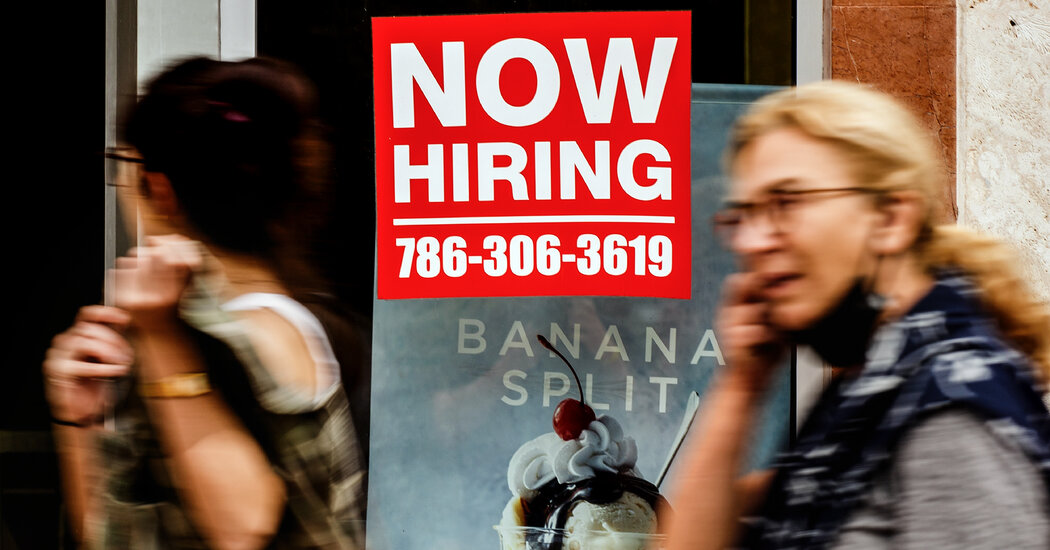Employers have been rankled, too, complaining of labor shortages as millions of workers — energized by the discussion about “essential work” during the pandemic and buoyed by savings — experience a degree of bargaining power they haven’t had in decades.
That has led to a tense, politically charged dynamic in which wage pressures are a broadening complaint among large and small businesses trying to maintain their profit margins, even though jumps in pay haven’t generally kept up with price increases.
“We’re learning a lot about how structurally fragile our economy is,” said Claudia Sahm, a former Federal Reserve economist, citing a dependence on “endless low wage workers and just-in-time supplies of goods” for keeping consumer prices depressed for many years.
The employment cost index, which tracks wages and benefits, jumped by the most on record in the first quarter of this year, according to Labor Department figures released last week. Still, a recent analysis conducted by the Economic Policy Institute, a left-leaning think tank in Washington, concluded that roughly 54 percent of the overall increase in prices in the nonfinancial corporate sector since the second quarter of 2020 could be attributed to an expansion of profit margins, while labor costs were responsible for less than 8 percent of price increases. The analysis indicates that 38 percent of the uptick stems from nonlabor input costs, such as overhead, fuel or raw materials.
That data complicates the increasingly popular narrative that the spikes in worker pay are mostly to blame for the severity of price increases, rather than a wider mix of reasons.
“Normally, you’d expect profits to decrease during a period of high inflation,” said Tony Roth, the chief investment officer of Wilmington Trust Investment Advisors, an arm of M&T Bank. The reason the opposite has happened for many companies over the last couple of years is, he says, straightforward. “Businesses are doing it because they can get away with it.”
The economy, while strong, may be locked in a vexing, self-reinforcing cycle for a while: The continued wave of household spending has often signaled to businesses that they had room to raise prices without consequence — allowing executives to hire more workers while maintaining profitability.

